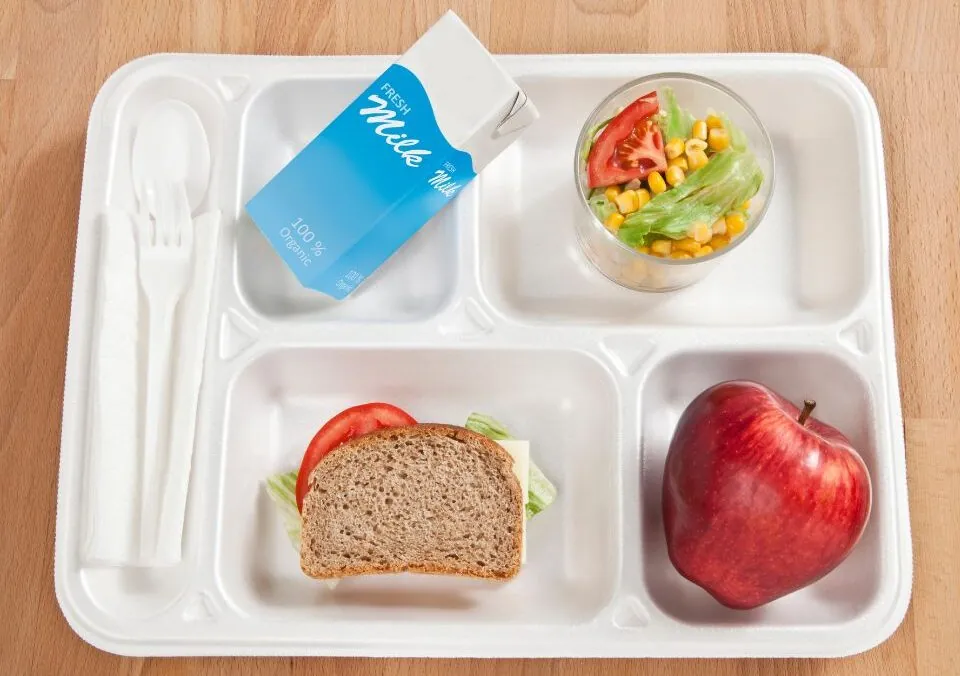Blog
Dairy 101 – USDA Plans to Change Flavored Milks in School Lunches

How many of you were told growing up that white milk comes from white cows, while chocolate milk comes from brown cows? People tried telling me that as a kid, but being a child raised in a family that raised cattle, I knew it was definitely a lie. All milk is white, regardless of the color of the cow. The only thing that contributes to the different colors and flavors of milk are artificial colors, flavors, and a whole lot of sugar.
Flavored milks have long been a staple in school lunches, largely due to their popularity among children. According to the USDA, flavored milk products were found to be one of the largest sources of added sugars in school lunches, particularly in elementary and secondary education settings. In response, the USDA is initiating a plan to reduce the sugar content in milk products served in schools by 2025.
The USDA’s plan presents a few options for compliance. Milk product producers might alter their recipes to meet the new reduced sugar requirements, or schools may choose to exclusively serve unflavored milk products. Based on the USDA’s commentary, it seems that the first option is the more probable outcome. Remarkably, approximately 90% of milk producers have already committed to modifying their products in alignment with the new guidelines. However, this decision ultimately rests with individual school districts, highlighting the variability in implementation across the nation.
One thing is clear: milk remains a vital part of a child’s nutritional regimen. It is crucial to ensure that children are getting enough dairy in their diets to obtain essential nutrients. Milk is rich in calcium, vitamin D, and protein, all of which are necessary for healthy bone development in children. The importance of dairy products is underscored by National Dairy Month, an annual observance marked in June that celebrates the dairy industry and its contributions to our nutrition and economy.

The Nutritional Benefits of Dairy
Before diving deeper into the recent changes surrounding flavored milks, it’s important to explore why dairy products hold such significance in children’s diets. Dairy serves as a source of numerous vital nutrients.
- Calcium: Calcium is essential for developing strong bones and teeth, especially for children and adolescents. The National Institutes of Health (NIH) recommends that children aged 1-3 consume 700 mg of calcium per day, and those aged 4-8 should aim for 1,000 mg daily. Milk and dairy products provide a significant amount of this mineral.
- Vitamin D: Vitamin D plays a crucial role in calcium absorption and bone health. In many cases, milk is fortified with vitamin D, making it an excellent source to help individuals meet their daily recommended intake. According to the NIH, children aged 1-18 should receive 600 IU of vitamin D daily.
- Protein: Dairy products are a fantastic source of high-quality protein, which is necessary for growth, muscle building, and overall health. A single cup of milk contains about 8 grams of protein.
- Other Nutrients: Besides the primary nutrients mentioned, milk is also a good source of riboflavin, phosphorus, and potassium, all of which contribute to various bodily functions.
The Role of Flavored Milk in Schools
Flavored milk has found its place in school lunches as an alternative to regular milk. Children are often more likely to choose flavored options, which can significantly increase their likelihood of consuming milk overall. Despite its added sugars, flavored milk accounts for about 70% of fluid milk consumption in schools.
While the sugar content in flavored milk is a concern, the benefits of milk consumption in general cannot be overlooked. Many children are at risk of not meeting their dairy needs; by providing flavored options, schools may ensure higher consumption rates. However, the challenge remains in finding a balance between kids enjoying their meals while minimizing excess sugar intake.
The Sugar Debate
The sugar debate surrounding flavored milk in schools isn’t new. Critics argue that high sugar levels contribute to the obesity epidemic among children in the United States. The Centers for Disease Control and Prevention (CDC) reports that childhood obesity affects 14.7 million children and adolescents, putting them at risk for various health problems, including diabetes and heart disease, later in life.
In light of these concerns, the USDA has taken several steps to address sugar consumption in children. The new guidelines aim to encourage the reduction of added sugars in school meals, which include flavored milk options. By pushing for limits on sugar, the USDA hopes to foster healthier dietary habits among young consumers.
What Does This Mean for Schools?
The USDA’s upcoming restrictions create a roadmap for schools to adjust their programs and products. Here are a few possible outcomes:
- Reduced Sugar Content: The first option would involve milk producers reformulating flavored milks to meet the new sugar criteria. There are already examples of this occurring, with some brands producing lower-sugar chocolate and strawberry options. These changes can help satisfy taste preferences without compromising nutritional value.
- Choice of Unflavored Milk: Schools may opt to exclusively serve unflavored milk products. While this may discourage some students from consuming milk altogether, it would reduce sugar intake. The decision will vary by district, depending on various factors including parental preference, available resources, and student feedback.
- Increased Awareness: The discussions surrounding flavored milk can increase awareness of nutrition both within schools and among families. This dialogue may cultivate a better understanding of healthy eating practices and encourage kids to explore other nutritious beverage options.
School Districts and Parental Involvement
The responsibility for implementing these changes will ultimately fall on school districts, which must consider the preferences and needs of their students and their families. It will involve active discussions with parents, educators, and health professionals to understand the best way forward.
Parental involvement is crucial in the transition process. Families can contribute by advocating for keeping flavored milk options while encouraging the consumption of healthier choices. They can also participate in school meetings and discussions about nutrition policies to ensure their voices are heard. Schools might also consider surveys to gauge student preferences and gather feedback on these proposed changes.
Nutritional Education: The Key to Success
Alongside these regulatory changes, nutritional education plays a pivotal role in shaping children’s dietary choices. By incorporating nutrition education into school curriculums, children can better understand the importance of balanced diets and healthy habits.
- Nutrition Workshops: Schools could offer workshops for students and families to learn about nutrition, meal planning, and the benefits of consuming dairy products like milk.
- Taste Tests: Implementing taste tests of different milk options—including lower-sugar flavored milk—can help children discover new favorites. Engaging them in the decision-making process draws their interest and helps them understand the importance of healthy eating.
- Integrating Dairy into Other Subjects: Teachers may integrate concepts related to dairy and nutrition into subjects like science or health classes. Lessons could discuss farming, food production, and the benefits of dairy in fun, interactive ways.
Conclusion: A Milestone for Dairy Products in Schools
As we celebrate National Dairy Month, it’s essential to recognize the contributions that dairy makes to children’s diets. The USDA’s proposed changes to flavored milk are a step forward in promoting healthier eating habits among school-age children. By working closely with milk producers and school districts, the USDA aims to strike a balance between taste and nutrition.
The upcoming changes present an opportunity to improve children’s dietary habits while ensuring the continued consumption of essential nutrients found in dairy. With strong parental involvement and focused nutritional education, schools can effectively transition to new guidelines while maintaining healthy and enjoyable meal options for students.
As we move forward, let’s advocate for keeping the dialogue open about the importance of dairy in our diets. Together, we can help ensure that children grow up healthy, strong, and well-nourished. And remember, all milk is white, regardless of the cow’s color!
By Heide Kennedy, Arizona Farm Bureau Communications Intern


















